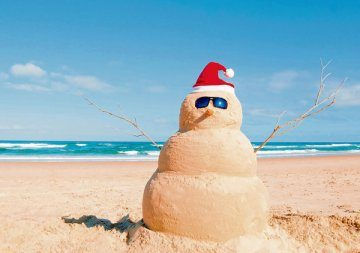Sunshine and hurricanes
- pablocrew2020
- Mar 24, 2020
- 3 min read
Florida is often considered one of the best states in the United States when it comes to weather! Because it is so far south, the temperature outside is often higher in Florida than most of the rest of the country. This means the winters are usually fairly mild, and many people choose to move to Florida when they retire (when older people are finished working for the rest of their lives), so they can relax and enjoy the nice weather, instead of having to deal with cold and snowy winters.
However, the general high temperatures also mean that the summer months can be extremely hot! Florida is famous for its sunshine and its beaches - it has even been nicknamed "The Sunshine State"! In the very hot summertime, most homes and restaurants have the air conditioning on all the time. It's also incredibly humid outside - this means there is a lot of moisture (water) in the air.

Because of the mild winters, Florida has a lot of people who travel down from the northern parts of the US and even Canada, to spend those winter months in a warmer place, and then return to their homes up north for the summer. These people are often called "snowbirds" (because they migrate like birds).
What are the 4 seasons? Can you name them?
Winter Spring Summer Fall
Match the pictures below with their season.




Although there are 4 seasons in the year, in Florida, there isn't a clear, marked difference in some of the seasons like in other states, because the temperatures are so warm. We also rarely get snow in the winter.
With the seasons in Florida, some people tend to group Winter & Spring together, and Summer & Fall together.
Winter/Spring Season

Florida typically has beautiful weather in the winter and spring. On average, Florida has the mildest winters in the Continental United States. The temperatures are cooler, but not extremely cold, and this is also Florida's dry season - it doesn't rain much. The humidity (water in the air) is also usually much lower. This is the time that "snowbirds" love to come stay in Florida for a few months - to escape the brutal winters up north and enjoy the mild temperatures and sunny days in Florida.
Summer/Fall Season

The summer/fall season is also known as the wet, or rainy season. This is also when it is extremely hot, and humid. It is quite common for there to be a thunderstorm in the afternoon or evening every single day, for weeks on end. The highest amount of rain for the whole state always happens in the summer months.
Thunderstorms

Florida has more thunderstorms than any other US State. Outside of tropical areas, Florida is one of the most "thundery" areas. The state also has the highest density of lightning strikes in the United States. Severe thunderstorms can sometimes lead to hail, very strong winds, and even tornadoes! Heavy rainfall can also mean flooding.

Hurricanes

Toward the end of these rainy, stormy summer months, and into the fall, Florida is also prone to hurricanes. Hurricanes are severe tropical storms that usually form over warm ocean water. They usually start in the Caribbean, or off the west coast of Africa. Tropical storms can stay in the water and die out, never hitting land, or they can gather heat and energy through those warm ocean waters, and get stronger. "Hurricane season" in Florida begins June 1st, and usually lasts 5-6 months, ending in September or November.


Watch the video below about hurricanes, and then answer the questions:
1. What is another name for a hurricane?
2. When a tropical storm's winds reach at least _______ miles per hour, it becomes a hurricane.
3. Hurricanes are ranked on the Saffir-Simpson scale, based on wind ______ and potential ________.
4. What is the most dangerous component when hurricanes come near land?
5. True or False: Storm surge can push water towards the shoreline up to 20 feet above sea level and can extend 100 miles.
6. __________ % of all hurricane deaths are the result of storm surge.

BONUS for students who want an extra challenge:
Look up the following words from the video, and explain what they mean:
(please don't just copy the answer! Really try to understand and explain)
unpredictable
sustain
peak
cluster
moist
encircling
surrounding
damage
devastation
infrastructure
minimize







Comments